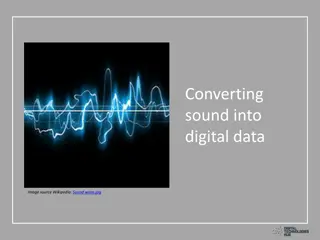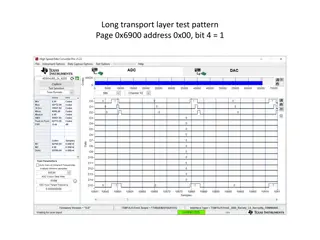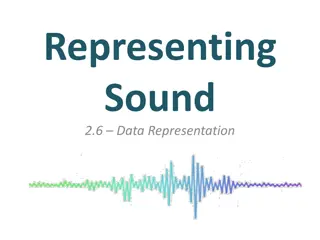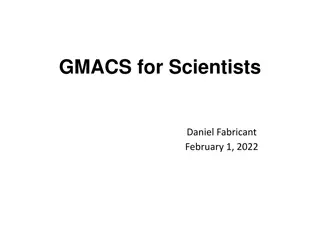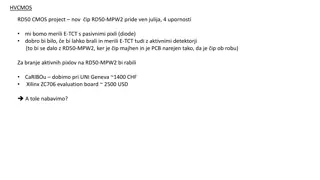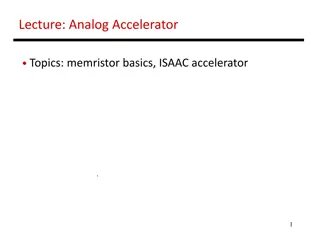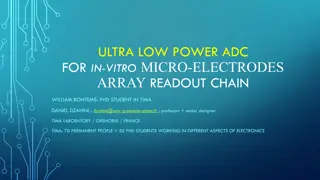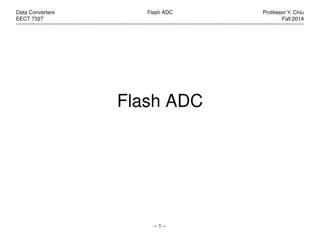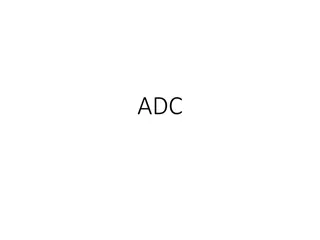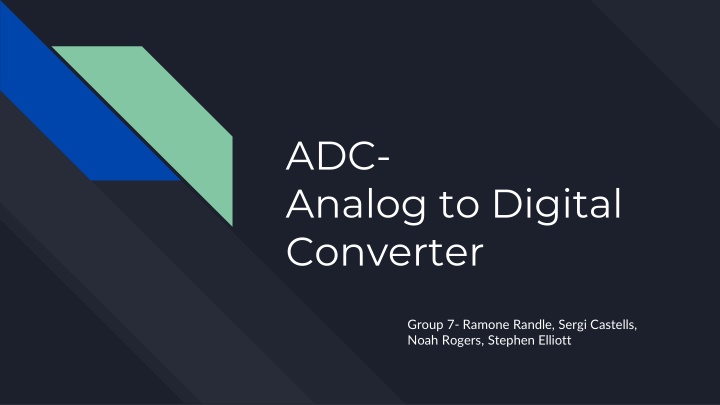
Analog to Digital Conversion (ADC) Process
Learn about Analog to Digital Conversion (ADC), the differences between analog and digital signals, the need for ADC in computing, real-world examples, common errors in ADC conversion, the physics behind ADC, and its relevance in Arduino projects. Gain insights into how ADC works, its applications with various devices like microphones, thermometers, and INA219, and the impact of ADC precision on audio recordings.
Download Presentation

Please find below an Image/Link to download the presentation.
The content on the website is provided AS IS for your information and personal use only. It may not be sold, licensed, or shared on other websites without obtaining consent from the author. If you encounter any issues during the download, it is possible that the publisher has removed the file from their server.
You are allowed to download the files provided on this website for personal or commercial use, subject to the condition that they are used lawfully. All files are the property of their respective owners.
The content on the website is provided AS IS for your information and personal use only. It may not be sold, licensed, or shared on other websites without obtaining consent from the author.
E N D
Presentation Transcript
ADC- Analog to Digital Converter Group 7- Ramone Randle, Sergi Castells, Noah Rogers, Stephen Elliott
Analog vs Digital Digital is either 0 or 1 Analog can have more meaning than on, 1, or off, 0 It s continuous Digital is useful for computers, but things in the real world are usually analog
Why Do We Need an ADC? Computers speak binary, which can be limiting Take measurements with a gradient of values and translate so the computer can understand
Real World Examples Analog Digital VHS Older land lines Photocopier Vinyl CD s and DVD s Iphone videos/recordings Memes(or practically everything on the internet)
Errors Due to having to convert between a continuous analog signal to an exact digital representation the ADC can present a different types of errors Quantization Error (Rounding Error) Non-Linearity (Physical Imperfections)
Physics of the ADC There are many ways to make an ADC Arduino has 10-bit ADC (2^10 = 1024 discrete levels) Analog voltage charge a capacitor measure time to discharge across internal resistor Microcontroller monitors number of clock cycles during discharge Returns number of cycles once ADC is complete
Relevant Information for the Course Microphone, INA219, Thermometers and anything connected to Analog Pins on the Arduino board use the ADC in some capacity Depending on what device is being used, the precision of the ADC can make a huge impact as with audio recordings the gain and subsequent sound quality can be affected depending on how well the ADC can handle processing voltage changes and such Audio Recordings are the result of the ADC converting an analog signal such as voltage (usually somewhere between 0 to 10V or -5V to 5V) and then converting this into a sequence of binary numbers.
Resources https://learn.sparkfun.com/tutorials/analog-to-digital-conversion/all https://www.elprocus.com/analog-to-digital-adc-converter/ https://en.wikipedia.org/wiki/Analog-to-digital_converter


